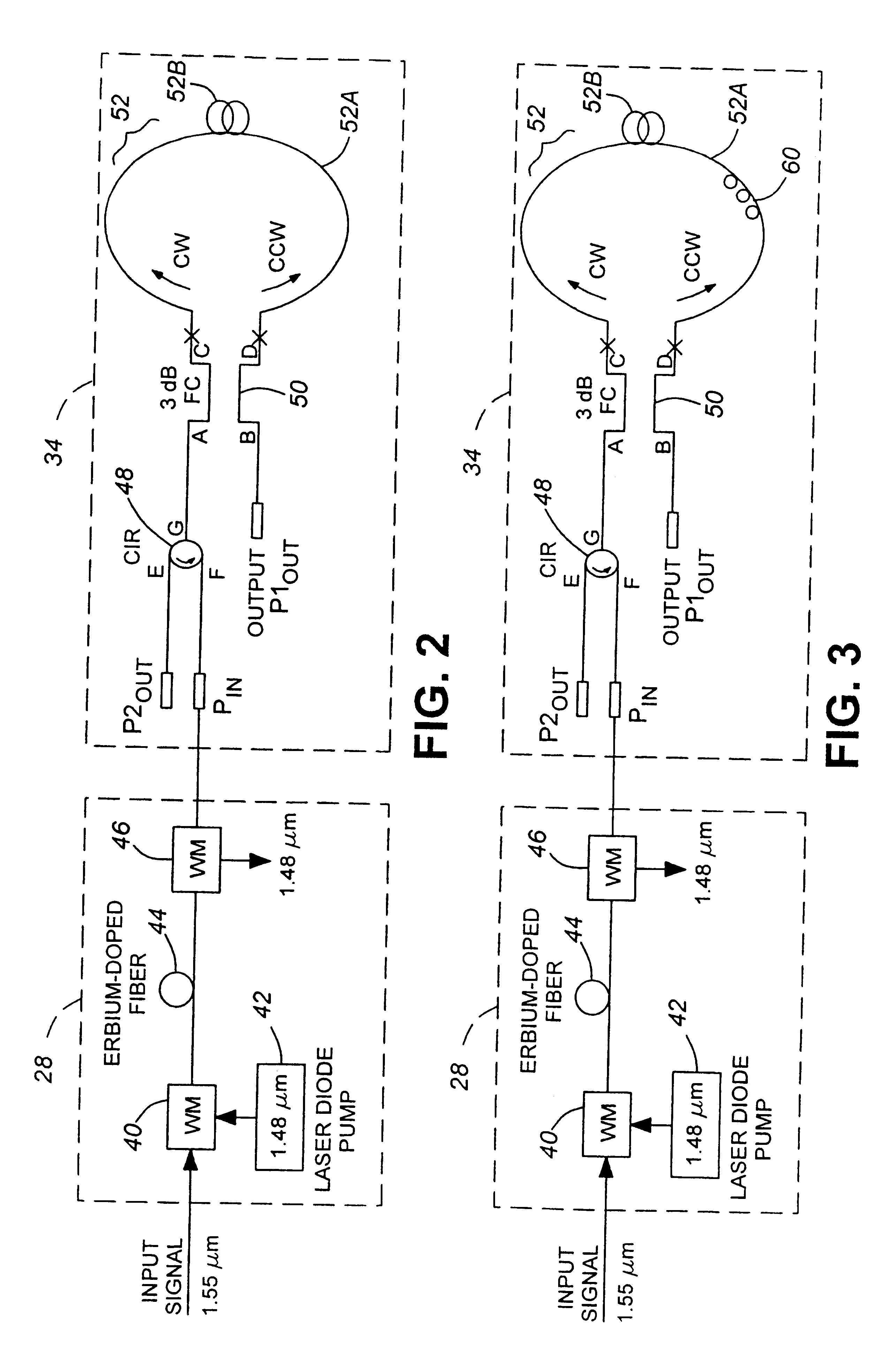Optical amplifier with loop mirror filter noise reducer, and loop mirror filter per se
a technology of optical amplifiers and filters, applied in optical amplifiers, lasers, transmission, etc., can solve problems such as reducing the signal-to-noise ratio, affecting the overall signal-to-noise ratio, and not being practical or useful in a real system
- Summary
- Abstract
- Description
- Claims
- Application Information
AI Technical Summary
Problems solved by technology
Method used
Image
Examples
Embodiment Construction
Referring to FIG. 1, an optical telecommunications system comprises a transmitter section 10 comprising a light source 12, conveniently a laser source producing continuous wave (CW) light, a modulator 14, conveniently a lithium niobate device, and an optical power amplifier 16. The modulator 14 is connected between the light source 12 and the input of power amplifier 16 and modulates the CW light with the data to be transmitted. The output of the power amplifier 16 is connected by an optical fiber transmission line 18 to an in-line (repeater) amplifier 20, which is connected in turn by a second optical fiber transmission line 22 to a preamplifier 24, the output of which is connected to a receiver section 26 for extraction of the data in a known manner.
The power amplifier 16, in-line amplifier 20 and preamplifier 24 comprise erbium-doped fiber amplifier stages (EDFAs) 28, 30 and 32, respectively, and loop mirror filters (LMFs) 34, 36 and 38, respectively. The LMFs 34, 36 and 38 remov...
PUM
 Login to View More
Login to View More Abstract
Description
Claims
Application Information
 Login to View More
Login to View More - R&D
- Intellectual Property
- Life Sciences
- Materials
- Tech Scout
- Unparalleled Data Quality
- Higher Quality Content
- 60% Fewer Hallucinations
Browse by: Latest US Patents, China's latest patents, Technical Efficacy Thesaurus, Application Domain, Technology Topic, Popular Technical Reports.
© 2025 PatSnap. All rights reserved.Legal|Privacy policy|Modern Slavery Act Transparency Statement|Sitemap|About US| Contact US: help@patsnap.com



